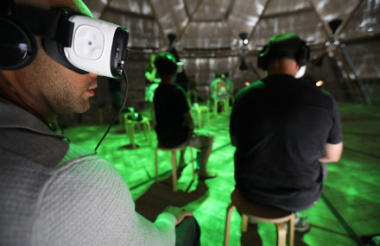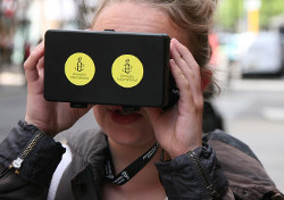Greenpeace has been trialling the use of virtual reality to help its fundraisers engage with people at festivals, and has seen sign-up rates double as a result.
Paula Radley, face-to-face operations manager at Greenpeace, told last week’s Fundraising Live conference, organised by Civil Society Media, that using virtual reality headsets as part of its exhibition areas helps people to experience different places.
“At many events we had people queuing up to talk to face-to-face fundraisers,” she said.
She said it was the combination of the virtual reality video, the way the wider exhibition area is decorated, and the chance for a fundraiser to sit down with a potential supporter that made it successful.
However, she added that one of the challenges is that it “attracts 16 and 17 year olds, when for face-to-face we’re really aiming for 30 plus”.
Greenpeace worked around this by having two queues – one for under 21s and existing supporters that was manned by volunteers, and one for potential supporters, which was manned by professional fundraisers.
Another challenge at festivals is the number of drunk people turning up, but she said that they politely encourage people to “come back in five hours”.
In response to a question from the audience, Radley said Greenpeace has tried virtual reality for doorstep fundraising but that it did not work as well as at festivals.
“It was a bit strange knocking on someone’s door and asking them to put on goggles,” she said.
VR app
Greenpeace has also been experimenting with 360-degree video and virtual reality via a phone app.
The idea is to make supporters “feel really excited” so “they won’t forget us”, according to Kasia Nieduzak, lead generation, acquisition executive at Greenpeace.
The app uses 360-degree video to show people things what life is like on one of the charity's ships and in the Amazon rainforest. So far 12,000 people have downloaded the app.
For Christmas the charity created a pack that included a virtual reality headset, a map and stickers.
Greenpeace sold 1,750 kits and asked for a minimum donation of £10. The average donation was £13.
Nieduzak said the campaign “worked well with existing supporters”, but that there was an issue with converting people to become regular givers as it was often bought as a present.
Greepeace is planning to add further virtual reality videos and continue marketing the kit.
|










